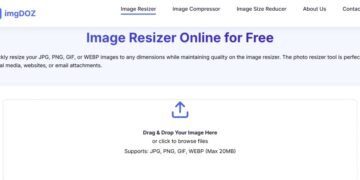Do you own the rights to the art and images that you create? If not, someone else does, and you have no say in how they present it.
In the United States, it is possible to protect your work with both a copyright and a trademark. In fact, there were 2.6 million active trademark registrations in the United States in 2020 alone.
Copyright protects artistic and other types of media. A trademark refers to the words and symbols used in marketing.
By choosing to trademark or copyright your work, you put yourself in the driver’s seat of its distribution and usage. Read on to learn more about trademarks and copyrights and which ones you may need.
What is a Trademark?
A trademark is a sign or symbol used to identify a particular brand, business, or product and to distinguish it from those of other businesses. It can be words, logos, slogans, images, or a combination of these elements.
They are typically registered with the government to protect the business’s rights to the brand. It’s used to protect the trader’s business reputation and goodwill from damage by others who use similar signs without permission.
What is a Copyright?
A copyright gives its owner the exclusive right to make copies of a work. This also includes performing the work in public or producing derivative works based on the work.
Copyright protection is available for a wide variety of creative works. This includes books, music, dramas, films, and even some computer programs.
To receive copyright protection, a work must be original and fixed in a tangible form.
The term copyright can vary from country to country but is typically the life of the author plus 70 years. The federal government of the United States grants copyright.
How to Trademark Your Work?
When it comes to trademarks, there are a few key things to keep in mind. First, it’s important to choose a unique and easily distinguishable mark. This will make it easier for consumers to identify your products or services.
Second, it’s important to make sure that your mark is not already in use by another company. You can do a search of the USPTO’s trademark database to see if anyone is already using your mark.
Finally, once you’ve chosen a mark, you will need to file a trademark application with the U.S. Patent and Trademark Office (USPTO). The application process can be complex, so you may want to hire a trademark lawyer to help you. Once approved, your trademark will be registered and you will have the exclusive right to use it.
How to Copyright Your Work?
To copyright your work, you need to ensure that it is original and unpublished. You can do this by ensuring that you are the only author of the work and that it has not been published before in any format. Once you have established that your work is original, you can then register your copyright with the US Copyright Office.
You can do this online or by mail. You will need to include a copy of your work, a description of your work, and your contact information.
Once registered, you will have the exclusive right to reproduce, distribute, perform, and display your work. You can also license or sell your copyright to others.
Benefits of Trademarking or Copyrighting Your Work
There are many benefits to trademarking or copyrighting your work. By doing so, you are legally protecting your intellectual property and preventing others from using it without your permission. This can help you monetize your work and ensure that you’re compensated for your creative ideas.
Additionally, it can help you build a reputation as a creative professional and establish yourself in your field. It also gives you the right to sue for infringement and collect damages.
Overall, trademarking or copyrighting your work can be a great way to protect your interests. This will ensure that you are able to reap the benefits of your creativity.
Enforcing Your Trademarks and Copyrights
There are a few things you can do to help protect your trademark or copyright. One is to monitor your mark or work for infringement. This can be done online or through a professional service.
If you find infringement, you can send a cease and desist letter to the infringing party. If the infringement is serious, you may need to file a lawsuit. Enforcing your trademark or copyright can be a long and expensive process, but it is worth it to protect your work.
What Can and Cannot Be Protected
There are many things that can be protected under trademarks and copyrights. This includes things like logos, slogans, and other branding materials. These can be protected so that others cannot use them without permission.
However, there are some things that cannot be protected. This includes things like common phrases or words, ideas, and facts. This is because these things cannot be owned by any one person or company.
Consequences of Infringing on a Trademark or Copyright
There are many consequences that can arise from infringing on a trademark or copyright. These can include civil penalties, such as damages and injunctions, as well as criminal penalties, such as fines and imprisonment.
Additionally, the owner of the trademark or copyright may take legal action against the infringer. You could also be ordered to stop using the infringing material and to pay the trademark or copyright owner any profits you made from the infringement.
Protecting Your Intellectual Property Rights
If you are a business owner, then it is important to learn about trademarks and copyrights and how they can protect your business. Trademarks protect brands and logos, while copyrights protect creative works. By understanding how these legal concepts work, you can create a stronger business that is less likely to be sued or copied.
Looking for more business advice? You’re in the right spot! Keep exploring for more awesome content to learn from.










